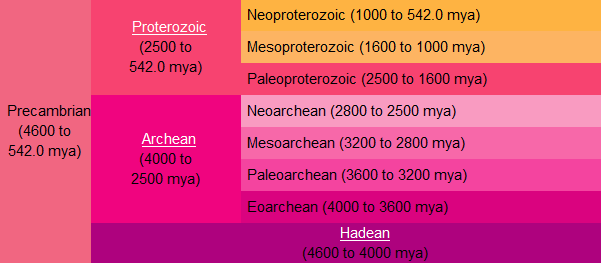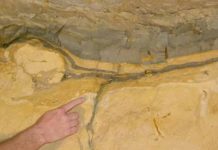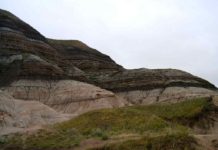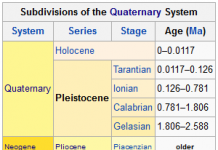The Mesoproterozoic Era is a geologic era that occurred from 1,600 to 1,000 million years ago. The Mesoproterozoic was the first period of Earth’s history of which a respectable geological record survives. Continents existed in the Paleoproterozoic, but we know little about them. The continental masses of the Mesoproterozoic are more or less the same ones that are with us today.
The major events of this era are the formation of the Rodinia supercontinent, the breakup of the Columbia supercontinent, and the evolution of sexual reproduction.
This era is marked by the further development of continental plates and plate tectonics. At the end of this era, the continental plates that had developed were more or less the same we have today. This is the first era of which a good geological record still exists today.
The first large-scale mountain building episode, the Grenville Orogeny, for which extensive evidence still survives, happened in this period.
This era was the high point of the Stromatolites before they declined in the Neoproterozoic.
The era saw the development of sexual reproduction, which greatly increased the complexity of life to come. It was the start of development of communal living among organisms, the multicellular organisms.
It was an Era of apparently critical, but still poorly understood, changes in the chemistry of the sea, the sediments of the earth, and the composition of the air. Oxygen levels had risen to perhaps 1% of today’s levels at the beginning of the era and continued rising throughout the Era.
Subdivisions
The subdivisions of the Mesoproterozoic are, obviously, arbitrary divisions based on time. They are not geostratigraphic or biostratigraphic units. The base of the Mesoproterozoic is defined chronometrically, in terms of years, rather than by the appearance or disappearance of some organism. This gives an illusory sense of certainty. Radiometric dating is a good tool, and gets better each decade.[citation needed] This creates some problems. As a practical matter, radiometric dates have an error margin of 1-2%. That sounds good, but it means that two sites, both measured to be at the exact base of the Ectasian, might differ in age by over 50 My. Since the Ectasian is only 200 My long, that’s a serious matter. And this accounts only for random error. Systematic errors can be caused by extraterrestrial events, by geochemical or biochemical sorting of isotopes, and human error. Thus far, biostratigraphy has usually proved considerably more exact. In addition, a thoughtful choice of biological marker can be used as a signal to expect a whole host of ecological changes. The difference between a Changhsingian and an Induan deposit isn’t just a matter of a few years. The world changed hugely at the end of the Permian.
By contrast, the transition from Calymmian to Ectasian has no meaning beyond calendar time. The usual reason given for the use of a chronometric system is that there is insufficient biological activity or geochemical change to find useful markers. That is a position which is now a little uncertain and is going to become increasingly tenuous over the next few years. For example, there are a number of good potential markers in the rise and decline of “Christmas tree” stromatolites, in the coming and going of banded iron formations, the appearance of stable carbon-13 isotope (13C) excursions, and so on. These have real meaning for the geologist and paleontologist.
For that matter, they are not completely without biological markers. There has been considerable progress in studying and identifying fossil bacteria and Eukarya. The cyanobacterium Archaeoellipsoides is one relatively common form, apparently known from several species. It is probably related to the extant Anabaena and indicates the presence of significant free oxygen. Oxygen levels also had significant effects on ocean chemistry; continental weathering rates increased and provided sulfates and nitrates as nutrients. It would be remarkable if this didn’t result in new populations of both bacterial and eukaryotic organisms. Since the presence of these cells would be tied directly to important geochemical events, they would make ideal organisms for biostratigraphy.











